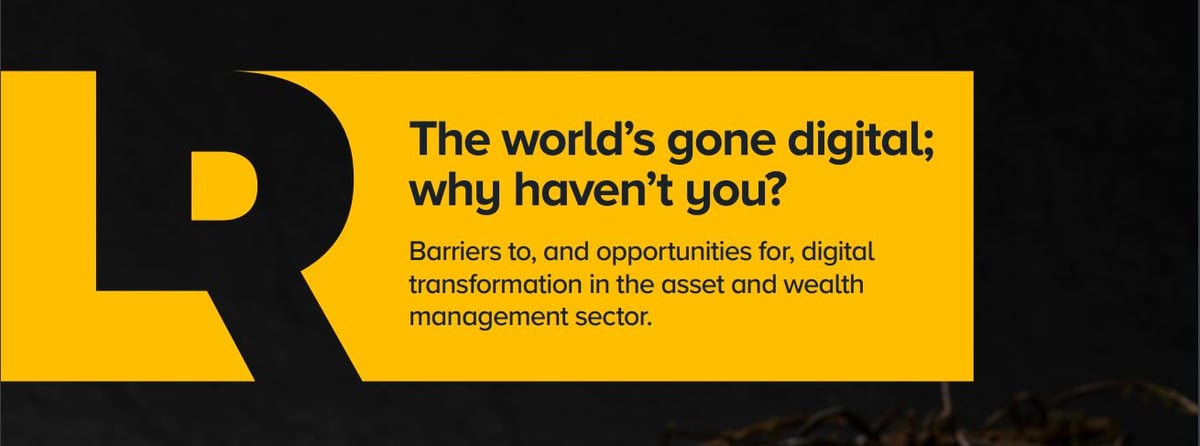


According to the report, some of the most effective digital transformation strategies for the wealth management sector include:
Want to know the most powerful way to convert digital sceptics and raise client expectations? The simple answer is to demonstrate results, and this can be achieved through identifying small-scale ‘quick wins'.
The good news is that this doesn't have to be complex; these results can be as simple as A/B testing different landing page treatments to demonstrate changes in content marketing activity, using data to analyse growth in client engagement, or being able to facilitate new relationships and connections with other wealth managers and industry experts.
Any initiatives that help show marketing's value in generating new leads have the potential to change perceptions and unlock investment - if people know you are growing, they will be more likely to jump on board.
Building a deeper understanding of clients starts with bringing together all the data the organisation holds about them - the more you know, the more you can spot potential avenues for getting new clients on board.
We are increasingly asked to help wealth management firms update customer records with information on browsing behaviour: this data can help firms understand and mitigate potential changes in customer fund strategies or to find cross- and upsell investment opportunities based on browsing interests - a strategy known in the wealth management industry as predictive wholesaling.
Despite the best efforts of many companies', pandemic-induced remote working came with several challenges, including reducing the impact and significance of personal relationships, and hampering the informal exchange of ideas between teams.
It is imperative that wealth management companies consider more systematic, process-based methods of breaking down barriers, focus on rebuilding positive personal relationships, and create a team that can really embrace digital transformation at every level. A team on the same page can boost productivity, invest in new solutions, and work together to digitally transform the business.
In many cases, wealth managers are often focused on the day job rather than actively engaging with the issues of digital transformation and the future of the organisation. They may not have the budget or authority to carry change through and need permission, guidance, and investment from the board in order to succeed.
In order to achieve digital transformation and remain competitive, wealth managers must work out how to address this "sticky middle", focusing on solutions that can get projects moving, improve efficiency, and bring in fundamental digital transformation. This may include creating new roles to boost productivity or using automation to free up time.
Most start-ups use some variant of Agile Methodology to accelerate their response to customer needs and reduce time-to-value - and having a good understanding and knowledge of the new wave of new technologies can put you in a prime position to improve the customer experience, grab a more significant market share, and take your place as a major player in the global economy. Remember: knowledge is power, so look to Fintech start-ups for inspiration, digital tools, and fresh ideas to incorporate into your business.
In a similar vein, it is vital to ensure that you are sourcing leaders who are shining stars in the digital world. Interviewees for this report suggest focusing on the following characteristics:
As you can see, few of the report’s findings refer directly to technology, but it is important to note that digital maturity will be essential if businesses are to capitalise fully on emerging technologies such as artificial intelligence.
AI is seen by many interviewees as the next big step in marketing automation. It enables what is known as ‘prescriptive marketing’; automatically selecting the best next communication to send a prospect to move them on to the next stage of their path to purchase - a strategy that can seriously boost client engagement.
The businesses that are quickest to realise this capability will open up a significant divide between themselves and their competition.
But in order for prescriptive marketing to work, organisations will need to ensure that have integrated both their customer data and their marketing systems across the entire customer journey. That might sound like a technology issue, but it’s actually just as much about culture. Teams and departments have to be happy to share their data to help the business hit its targets. They also need to understand how detrimental the ad hoc purchase of point solutions to their problems can be to the organisation’s overall performance.
Another interviewee, Sanchari Roy, marketing manager (VP) for Benelux & Nordics, Allianz Global Investors, summed up the situation:
“From an efficiency perspective, we can definitely use digital better,” she said. “It’s not only about what clients see; we could also use technology to make our internal processes cleaner and quicker, as long as employees are open to using new or different systems. This is often tricky as we all have our old ways of working and adapt to change in different ways.”
